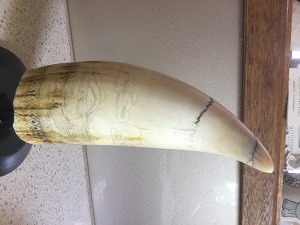Collecting, what a joy! For thirty years of my life I have collected. Not in a specific area, but very wide ranging. As long as it was unique, interesting or had a great story attached. I still have my favourites like items relating to Australian history – pottery, convict era items, old cedar furniture, old shop packaging & signs, old petrol & oil memorabilia – signs, tins & bottles ……….. You get the idea, Jenny and my interests are wide ranging.
Collecting is a passion that stays with you your entire life. It is a hobby that can be carried on well into retirement. It takes you places such as markets, fairs, antique stores and lots of people’s homes. The best thing of all, except for the really interesting items found, is the people that you meet and the great stories that you hear. Yes, COLLECTING does it for me & now being retired, from my work, I hope to have many more years travelling, to look for finds & meet interesting people with great stories to tell about their items.
I have been lucky enough over the years to pick up some pieces of SCRIMSHAW and like many of the items that I have found, they come from the most unexpected places. I received a phone call from a gentleman who said he wanted me to look at some of his interesting items. The directions were to travel through Mount George towards Cooplacurripa Station (Deliverance country). When I arrived I was gobsmacked at the range and quality of his general collection, ranging from Norman Lindsay paintings to Scrimshaw. The reason he had called was that he wanted to sell some items to fund a trip overseas. We were able to come to an agreed price that we were both pleased with.
 Scrimshaw is the name given to engravings done on, usually bone or ivory (often the teeth of sperm whales or walrus tusks). The Eskimo people have been doing it for thousands of years, but the most collectable Scrimshaw was done by sailors on whaling ships from the early 1800’s. A maker of Scrimshaw is called a scrimshander.
Scrimshaw is the name given to engravings done on, usually bone or ivory (often the teeth of sperm whales or walrus tusks). The Eskimo people have been doing it for thousands of years, but the most collectable Scrimshaw was done by sailors on whaling ships from the early 1800’s. A maker of Scrimshaw is called a scrimshander.
Sailors on whaling ships had lots of down time, as the search for whales, in a sailing ship, could be very hit or miss. So, sailors took up the craft of using needles to engrave pictures onto the surface of these ivory items and then rubbing soot or ink into the grooves to make it stand out. These pieces were often tokens of love for those left behind, but some supplemented their income and sold their items when they returned from voyages. The subjects of the etchings were often depicting “The Whale Hunt” or of their sweethearts with love messages.
The use of any ivory for these practices is now banned, but these unique items of history are still to be found in museums & private collections. I was lucky enough to come across this piece.
I am always happy to help out with appraisals or to talk about interesting items. Call Rex on 0427 880 546.
Happy collecting!
